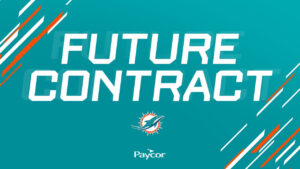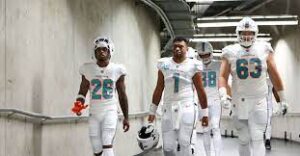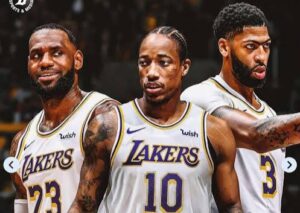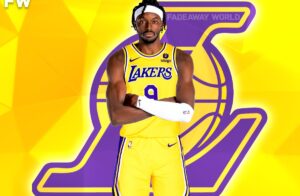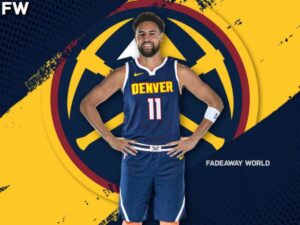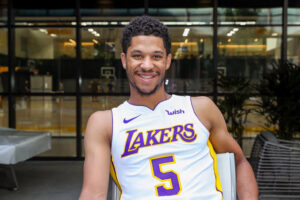NFL’s Black Friday game is the latest warning sign for traditional TV.
The Miami Dolphins will host the New York Jets in the NFL’s first-ever Black Friday game, but it won’t be a traditional broadcast or cable channel. Instead, the game will be streamed exclusively on Amazon’s Prime Video. The NFL’s decision to launch a new Thanksgiving tradition on a streaming platform comes at a time when traditional television is struggling to keep up with declining ad revenue and cord-cutting. The Black Friday matchup is part of the NFL’s “Thursday Night Football” partnership with Amazon, which has helped boost NFL viewership by 6% since last year. Streaming the day after Thanksgiving could help Amazon capture some of that holiday viewership, which set records last year. “I don’t want to make any predictions on the ratings, but I think they’ll be good,” Brian Rolapp said this week. The Black Friday game will kick off at 3:00 pm ET.
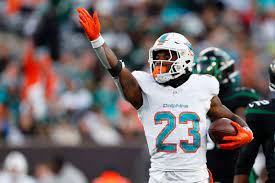
It’s no secret that Thanksgiving Day is one of the most popular days of the year for football games. With the Detroit Lions hosting the Dallas Cowboys, it’s no surprise that networks such as Fox, CBS, and NBC will have games on the day.
The Black Friday game is expected to be a yearly event for the NFL and Amazon, executives said at the media conference on Tuesday.
The streaming broadcast will include QR codes on the bottom of screen that will connect viewers to some of the company’s Black Friday deals, as well as a postgame concert featuring country music star Garth Brooks.
Amazon has an 11-year “Thursday Night Football” deal with the NFL, and YouTube TV’s “NFL Sunday Ticket” package is one of many live sports offerings that have made the switch from traditional cable to streaming platforms in recent months.
For example, in October Warner Bros. announced the launch of a new sports add-on tier for its flagship streaming platform, Max, which offers hundreds of live sporting events.
ESPN’s pivot
For years, ESPN has dominated traditional TV sports programming, but that could soon change as the cable giant prepares to stream all its programming in a planned DTC rollout.
While the streaming trend continues to gain traction, sports programming has so far kept cable and traditional television afloat, at least for the time being.
Data firm Nielsen reported in July that traditional TV accounted for less than 50% of total TV usage, but linear surged in both August and September last year. The surge was largely due to the return of professional and college football, Nielsen reported in a report last month.
In the meantime, ESPN has so far held its own in the face of the decline in traditional TV. According to parent company Disney’s latest quarterly report, ESPN had a “modest increase” in ad revenue, despite overall TV revenue declining for the company.
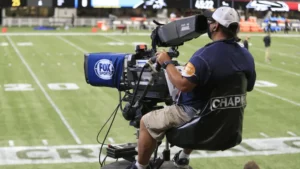
“Sports programming is the glue that holds the linear TV industry together,” says Tim Nollen, an analyst at Macquarie.
However, ESPN’s dominant position in sports coverage could be the death knell for linear TV. If ESPN launches its own DTC service, which could offer far more than the ESPN+ app currently does, it could prove to be the catalyst sports fans have been waiting for to break away from the bundle.
“When ESPN launches their own DTC product, depending on how much it costs, it could create a significant number of live sports outlets outside the bundle to speed up cord cutting,” Hodulik said. “That’s what I believe people are expecting.”
Bob Iger, CEO of Disney, said on CNBC’s “Boorstin” on November 8 that Disney would launch a “direct to consumer” ESPN flagship in 2025.
However, not everyone believes ESPN’s move into streaming will hurt its bottom line too quickly. “If you look at ESPN’s economics, they can’t just jump from pay TV to DTC overnight and expect everything to stay the same,” Patrick Crakes, a sports media consultant who formerly worked for Fox Sports, said in an email. “Even with pay TV declining, there’s no DTC product that can scale like pay TV.”
Instead, Crakes sees the future as a “new version of a pay TV bundle,” with streaming products integrated into the “traditional economics of the bundle.”
This is similar to the recent Disney and Charter agreement, according to Crakes, which now includes Disney+, ESPN+, and ESPN+ in some Spectrum packages.
For those media companies that haven’t yet made the switch to streaming, there could be challenges ahead.
How Vulnerable is Fox?
Fox will be the biggest victim of the cooling ad market, according to Macquarie’s Nollen. (The Macquarie Group and affiliates have a net long position in at least 0.5% of the equity securities held by Fox Corp.)

Fox and other media companies, such as NBCUniversal through Peacock, have largely shifted to streaming platforms, where ad revenue from those platforms can partly offset the decline in linear. The issue with Fox is that it does not have a streaming platform other than its ad-supported free service Tubi. Nollen noted that Fox made the decision to go all-in on the bundle a couple of years ago, and “they’ve been surprisingly successful at it,” but if cord-cutting speeds up and people start streaming sports elsewhere, “I don’t know what Fox has planned,” he said.
Fox did not respond to a request for comment.
I can imagine the ESPNs of today going direct-to-consumer (DTC), but I’m not sure how much of an impact that will have on us or the industry as a whole, he said. “If there is a sports bundle coming out that’s going to be across multiple network providers, then Fox will be the first point of contact when people want to bundle our content with their services, just because of the strength of our sports offering,” he said.
